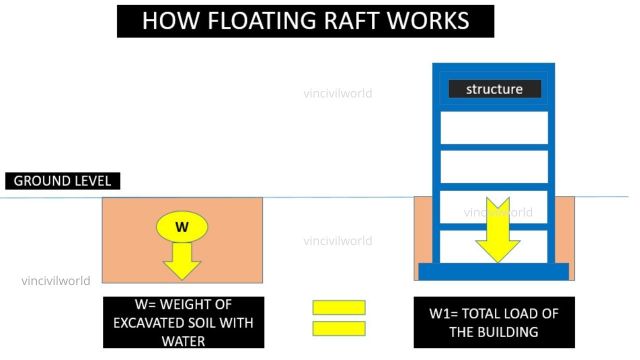Also Read : Types Of Raft Foundations
Also Read : Pile Foundations – Types and Advantages
How Floating Raft Works?
Concerns of Floating Raft/Balancing Raft
Execution of a floating foundation demands massive earthwork excavation in high water table areas. Open dewatering may not be sufficient to control a large amount of water flowing in the excavated areas. Wellpoint dewatering systems have to be run simultaneously with the excavation to lower the water table.
Excavation of floating foundations can trigger soil collapse and soil scoring from the bottom of existing foundations. Sheet piles have to be erected to protect the building against any possible damage during excavation.
Materials required for temporary retaining walls like sandbags, PCC blocks, etc has to be organised and mobilised before starting excavation. Temporary retaining walls have to be constructed in tandem with excavation works.
Heave formation can always happen while doing deep excavations because of the weight of soil on both sides of the excavation pit. Heaves formations cannot be avoided in any case but have to be controlled or else it may initiate foundation settlements. Heave formation can be minimised by further lowering the water table to a depth below the founding level of the structure. Installation of friction piles or micro piles on partially completed excavation surfaces can also control heave formation to an extent. Concrete bands are provided at the bottom level to control heave formation.
Balancing raft foundations are adopted for high rise buildings with multiple basements. Execution of these foundations requires highly skilled professionals and micro-level supervision supported by an experienced and skilled workforce. All safety precautions have to be done to protect the nearby structures from any damage.



5 thoughts on “Balancing Raft or Floating Raft Foundation”
Comments are closed.